中国的冬天 (Winter in China)
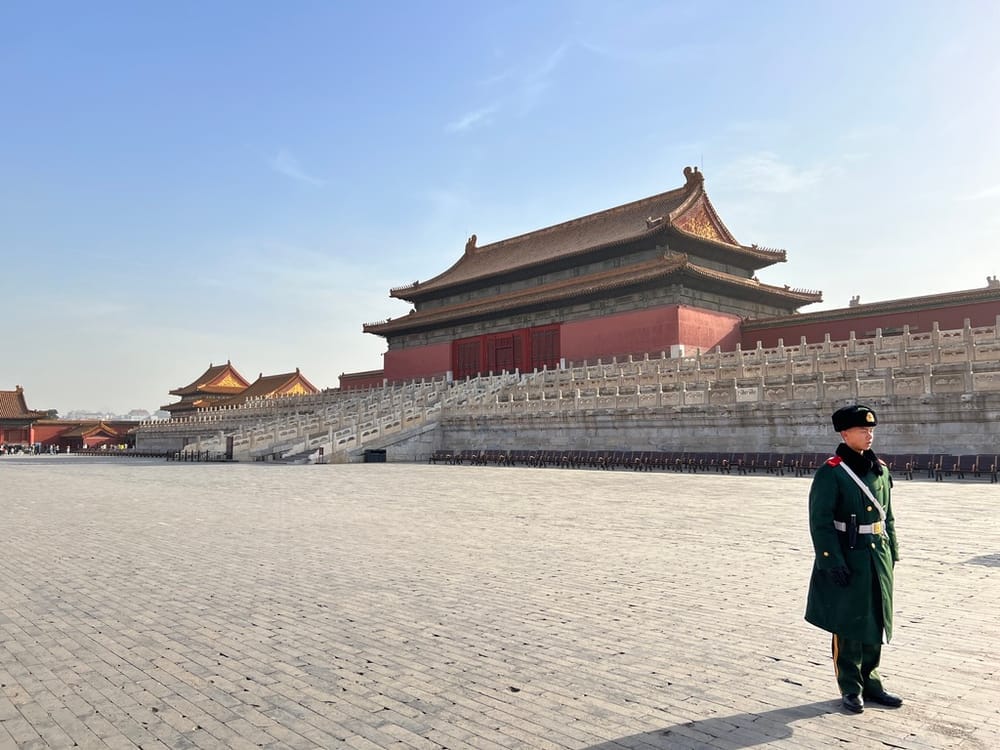
The first half of this post is how to visit China as a foreigner. If this doesn't apply to you or you're not interested, then skip to the second half where I go over my trip in detail.
The Forbidden Kingdom. The Middle Kingdom. The People’s Republic. When most people think of China, they imagine an impenetrable, far-off land closed off to the rest of the world. While that has been true in many regards (especially during the height of COVID), China has recently been relaxing its borders and has made visa-free travel available to different nationalities (unfortunately, Americans are not part of this). China wants more tourists to visit which is why this is the perfect time to go!
Over the years, I’ve been fortunate enough to travel to China on multiple occasions, and I always have a great time. China is definitely unlike any other country I’ve been to. It’s also not the easiest country to get to or travel around. So let me break it down for you.
Here are the things you need when you’re visiting China
- A valid passport with at least 6 months of validity
- A visa (if you’re not part of the visa exempt countries)
- A sim card* with data
- *that can circumvent the Great Firewall
- Mobile payment apps
- A good sense of humor
Step One: Get a Visa
Americans are privileged with one of the strongest passports in the world, so we’re very unaccustomed to traveling to places that actually require a physical visa. However, China requires us Americans to get a visa before we can even think about visiting. Americans need to apply for a tourism visa (the L-visa) through the Chinese embassy or a U.S. consulate. The process is tedious, and you need a complete itinerary to apply for the visa. This includes hotel reservations, flight information, proof of residency, and so on. It also costs $140. The plus side is that the visa allows for multiple entries and is valid for 10 years. Even if your old passport expires, you can travel to China as long as your visa is still valid and you have your new passport with you.
For peace of mind, I went through a visa agency in Los Angeles (this was back in 2019, mind you). The agency, of course, charges a fee, but they take care of all the paperwork for you and tell you exactly what you need to provide.
Once approved, you’ll get a physical visa sticker that takes up a whole page in your passport.
Step Two: Plan Your Trip
But really, this is step zero as you need a planned itinerary to get the visa (lol). China is a huge country with a vast and rich history that spans thousands of years. I’ve visited four times and I still haven’t seen everything I want to see. The most commonly visited cities are Shanghai and Beijing. However, I would definitely recommend Xi’an, Chengdu, and Chongqing as well. If you’re into nature, China has some of the most stunning and spectacular sceneries in the world. Zhangjiajie is commonly referred to as the “Avatar mountains.” Yunnan boasts gorgeous sights. The Harbin ice festival is said to be breathtaking. Tibet is an absolute must-see, but that’s its own can of worms as it involves a separate visa process on top of getting a Chinese visa.
Make sure to plan your visit around Chinese holidays. I would strongly avoid traveling during the Chinese New Year because everyone will be going home to visit their families. Airports, train stations, and roads will be packed. Shops and restaurants will be shut down. Some tourist attractions will not be open. For reference, the Lunar New Year is typically in February.
For this past visit, I went to China in December, and it was a perfect time to visit in my opinion. It was not peak tourism season, so a lot of tourist destinations weren’t crowded at all, and I could take my time to see the sights. There were also no problems with getting trains or flights from city to city. The drawback is that, yes, it is on the chillier side. But just eat some hot pot and you’ll be warmed up!
Summers in China can be extremely hot and humid. Be mindful of the weather when you plan your trip to China.
China is a huge country but has a robust internal infrastructure, so flights, subways, and trains are plentiful. It’s easy and convenient to travel within China.
Transportation:
If you’ve been to major cities like New York, London, or Tokyo, you’ll be able to navigate China’s public transportation just fine. China’s internal infrastructure is excellent for getting around with a robust system of subways, trains, buses, and planes. The subways have signs in Chinese, pinyin (the Chinese romanization for their characters), and English. They also list the next subway station, so you’d have to try hard to get lost. The subways are fast, clean, and efficient.
Be warned: every subway station has security, and you have to go through metal detectors before entering. I wasn’t too fazed as I’ve been to countries like Israel and India where it’s the same thing, but I can see how people would be taken aback by such security measures.
I would recommend that foreigners avoid taking the buses as they’re slower and didn’t have any English signs when I visited.
Taxis are plentiful in the major cities. Didi is China’s equivalent of Uber and has a standalone English app that you can download. I recommend using Didi rather than hailing a taxi off the street, as taxi drivers most likely will not speak English and addresses in China can be complicated.
China has high-speed bullet trains similar to Japan’s. Their trains aren’t quite as nice as the Shinkansen, but they do the job. For convenience, I would buy tickets ahead of time using Trip.com (Trip is a Chinese-owned company so they’re very good about booking things within China), but you can also buy them at the train station. The train stations are similar to airports: they’ll check your passport, and you’ll go through metal detectors and have your bags scanned. The signs are in Chinese and English. You’ll line up outside of your assigned station number, and once your train arrives, your passport will be scanned in order to go through the turnstile. Then, get on the train and enjoy your trip! Amusingly, they’ll play Chinese propaganda on the train monitors throughout the ride.
Chinese airports are like airports anywhere else. The only quirk is that they’ll have turnstiles that turn once your Chinese ID is scanned. As a foreigner, you don’t have a Chinese ID, so you can’t go through the turnstiles. You have to go to the agent every single time, and they’ll manually let you through. As you travel through China, you’ll see how the system is very efficient for its citizens but annoying for foreigners, as things take more time.
I was amazed at how nice the domestic flights are in China. They allowed for one free checked bag, and they served meals on the flights—even if it was only an hour-long flight. American domestic flights could never.
The Great Firewall:
China is not a free nation and heavily censors its internet. Chinese people cannot access western sites such as Facebook, Instagram, Gmail, Reddit, and so on without a VPN. This can be problematic for foreigners who visit and suddenly find themselves unable to access their emails or Google Maps for navigation.
I strongly suggest getting an international phone plan with your domestic cell phone provider or a SIM card from Hong Kong with data (Holafly offers this as an eSim). If you get a SIM card in China, you’ll be subjected to the same restrictions I mentioned above. A Hong Kong SIM card, however, is not subjected to the same restrictions as they’re “technically” not part of China. That way, you’ll be able to use censor-free internet and access western apps.
A VPN is also necessary. If you want to use your hotel’s Wi-Fi or the Wi-Fi in coffee shops, your internet access will be restricted. China is very good at cracking down on popular VPN providers such as NordVPN and ExpressVPN, so doing research beforehand is necessary. You’re better off using smaller, less-known VPNs. I used LetsVPN when I was in China, and it worked great. However, by the time I write this, China could have blocked them.
You’ll want access to things like your email, navigation, translation tools, YouTube, and Spotify when in China, so it’s necessary to prepare before you go there.
Pro tip: Even with a VPN, Google Maps doesn’t work very well in China. Apple Maps is much more reliable and will even have up-to-date information about public transportation.
Payment:
The annoying thing about China is that it is a mobile payment nation first and foremost. You know how Apple Pay is only now becoming a thing in more and more shops in America? Well, China has been like that for years. This means that physical cash is rarely ever used in day-to-day life. Even in rural Tibet, they’ll use their phones to pay for things. Even elderly grandparents use their phones to pay for goods.
The two popular payment apps are WeChat and Alipay. It was only very recently that both programs allowed foreign credit cards to be linked to them. The first few times I visited China, I was not able to use either program and had to rely on cash, which was incredibly annoying. Credit cards are very rarely accepted outside of hotels.
WeChat is hard for foreigners to sign up and get accepted. It requires you to get “verification” through someone who already has a WeChat account. This means if you don’t have any friends in mainland China, you can’t sign up. Luckily, Alipay doesn’t have the same restrictions, so Alipay is much more foreigner-friendly.
Weirdly, both programs limited my spending to 1,000 yuan a day, which translates to $140 USD. This usually wasn’t an issue, but I ran into a problem where I had to pay my tour guide but couldn’t due to these restrictions. I had to have my friend with a Chinese bank account transfer him the money.
Carry around cash in case both apps don’t work. Cash is rarely used in China, but it’s against the law for a store to not accept cash, so cash is definitely okay to use. You will probably just get weird looks.
If you’re able to get a friend to verify your WeChat account, it’s a very handy app to have. A lot of restaurants and cafes will have their menus and do online orders through WeChat mini-programs. One of my favorite bubble tea chains, HeyTea, allows you to order ahead of time through WeChat. Some tourist attractions, like Tiananmen Square, need to be booked through WeChat.
Language Barriers:
I can speak survival Mandarin. This means that while I can’t hold a complicated conversation, I know enough to order at restaurants and get by. It's worth noting that China ranks relatively low on the list of countries where English is widely spoken. In my experience, younger people are more likely than older people to have some English skills. Still, the overall English proficiency is quite low. But don’t let this stop you from visiting. People in China are incredibly friendly and welcoming. I found that strangers were always willing to help if I ever had problems.
I would definitely recommend learning a few basic phrases before you go, such as “hello,” “thank you,” “I want…,” and “how much?”
Hello: 你好 (nǐ hǎo)
Thank you: 谢谢 (xiè xiè)
How much money?: 多少钱?(duō shǎo qián?)
I want…: 我要 (wǒ yào ____) (for example, “I want water” is wǒ yào shuǐ)
Download Google Translate and use its camera function to scan menus in restaurants for translations. Many restaurants will have pictures of the food on their menus, which is helpful for those of us who can't read Chinese.
Safety:
As a solo woman, I felt perfectly safe in China. I was able to walk around at any hour of the day and never felt uncomfortable. As paradoxical as it sounds, China is a police state, so there are cameras everywhere. Consequently, there’s very little crime as you can’t get away with it due to how strict the government is. It’s bad for the people who live there but good for us tourists.
Definitely use your common sense. Free speech does not exist in China. Don’t be an idiot and start talking about politics, and you’ll be completely fine.
Sense of Humor:
Things will go wrong. Take it in stride and go with the flow.
To summarize, here are the apps you'll need in China:
- Baidu Maps: Their equivalent of Google Maps.
- Apple Maps: It works surprisingly well in China. Google Maps is useless.
- Trip.com: You can book tickets to tourist attractions, trains, airplanes, and tours.
- WeChat: Use this if you have a friend or family member in China who can verify your ID. Otherwise, use Alipay.
- Alipay: You can link your credit card and pay for goods and services. This can also be used on the subways. Remember: credit cards are rarely accepted in China. Always carry cash as a back up.
- Didi: China's equivalent to Uber.
- Google Translate: Use its camera function to translate signs and menus.
- Sherpa's: Only available in major cities. A food delivery app.
- Xiaohongshu: Sort of like Chinese Instagram. Use it to find recommendations for restaurants and trendy locations.
- Dianping: The Chinese equivalent of Yelp.
My China Trip (Beijing, Tibet, Chengdu, Chongqing, Xi'an)
I knew I wanted to take the month of December off from work. The destination was a mystery. I was eyeing Morocco and Tunisia and while I was waiting for flight prices to drop, my friend, Mia, asked me if I was interested in traveling to China with her. I said yes without any hesitation and immediately booked the flight.
I studied Mandarin in high school and had been to China a few times previously. However, this was the first time I was taking a prolonged trip there, especially post-COVID, so I knew I wanted to make the most out of it, especially with the advantage of having a native Chinese speaker with me. After much research, I decided my itinerary would be Beijing, Tibet, Chengdu, Chongqing, and Xi’an in that order. Mia and I would hang out in Chengdu and Chongqing together, and I’d be left to my own devices in the other places (with Tibet being the notable exception).
BEIJING:
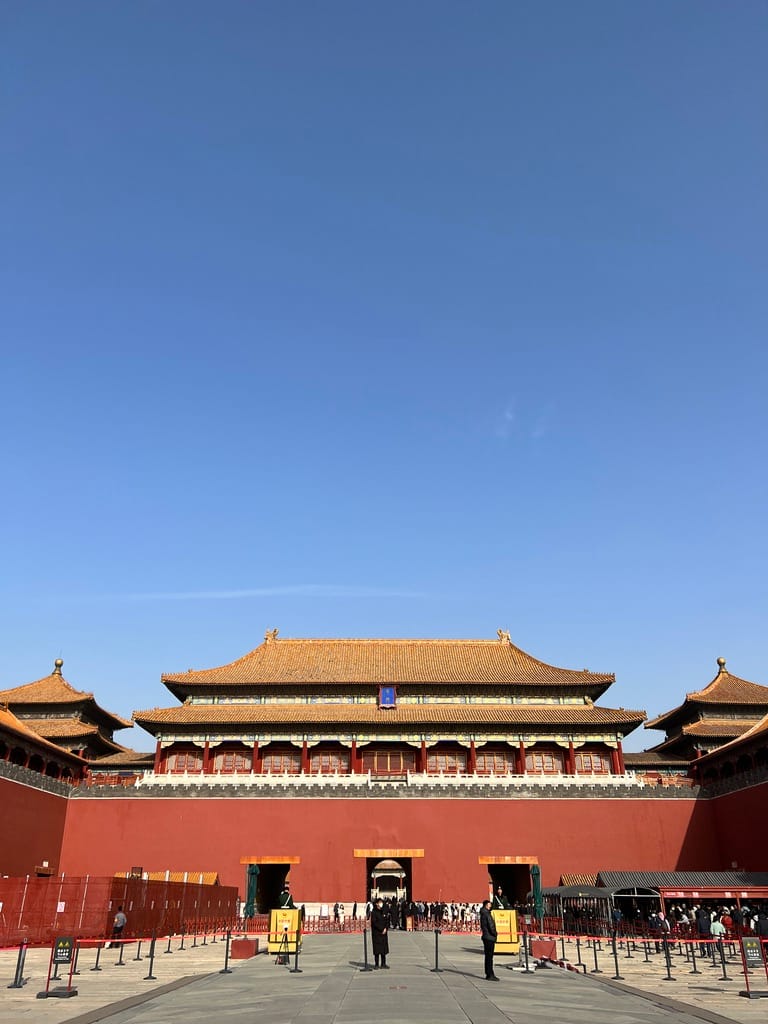
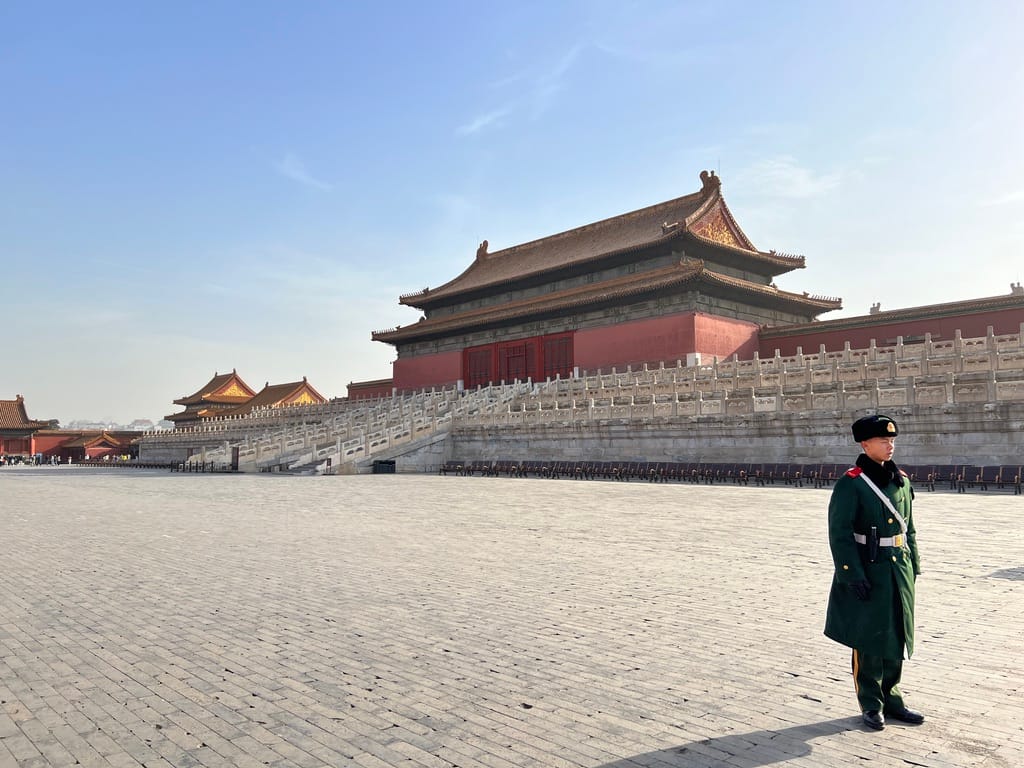
Beijing was the city I was looking forward to the most but also the one I had the most anxiety about. Beijing is China. It’s the embodiment of everything you imagine when you think of China. Tiananmen Square, The Forbidden City, The Great Wall, the hutongs, the communism—it has everything.
I flew into Beijing and was incredibly paranoid that China would refuse to let me into the country. You see, my passport had expired, but my Chinese visa was still valid. I renewed my passport and according to all the articles I checked, as long as I traveled with both passports and my Chinese visa was still valid, I would be fine. I was still anxious. I even emailed the Chinese embassy and they confirmed it was okay. The anxiety still persisted.
I landed in Shenzhen and got in line for immigration. The person right in front of me, for unknown reasons, was escorted away by two Chinese airport security guards. I started sweating bullets. It was my turn, and I stepped forward. The woman took both of my passports, gave them a look-over, and asked me why I was visiting China. “Tourism,” I replied. She nodded and stamped my passport, letting me in without any further questions. Whew. I was safe.
The second drama of the day happened a few hours later when I was checking into my hotel. Before I went to China, I set up my accounts with Alipay and WeChat. China is an incredibly mobile payment-driven nation, and everyone and their grandmother uses either program to pay. Even the street vendors in rural China take Alipay and WeChat. Cash is very rarely seen in China and is used primarily by foreigners who don’t have Chinese bank accounts. Anyway, both apps restricted my spending so when I went to pay for my hotel room, I was unable to do so. It was over their allotted limit.
'Fuck,' I thought. Luckily, I still had currency left over from the last time I went to China. I took out my cash, counted it, and handed it to the hotel receptionist. He gave an incredulous laugh and handed the money back to me. I looked at the cash, and my stomach dropped. I had packed hastily, and in my rush, I took money with Chinese characters on it. The problem? It was Taiwanese currency I had been attempting to pay with. Oops. Big Oops. I’d only been in China for a few hours, and already I had made a political faux-pas. Feeling defeated, I opted to pay by credit card even though they charged a surcharge for it.
I was so exhausted that I checked into my hotel room and immediately passed out even though it was only 3 pm.
The next day, I woke up nice and early in time for my booked tour to The Great Wall. I walked to the meeting point where the tour group would pick us up, which wasn’t too far away from my hotel. In a sea of Chinese people, I saw two white people smack dab in the middle, so I figured they were part of my group. My instincts were indeed correct. I got to talking to them and discovered they were from Spain and were visiting East Asia for a few weeks, having just been in Japan before they came to China. They complained about how difficult it was to navigate in China—their phones didn’t work thanks to the Great Chinese Firewall, and they had difficulty paying for things since they didn’t have WeChat or Alipay installed. Out loud, I sympathized with them, but internally I was like, why would you travel to China without doing your research? I assumed most people knew that China blocked western websites, so things like Google, Facebook, and Reddit were all blocked. I guess there’s a difference between knowing and experiencing it for yourself. I had installed a Hong Kong eSim before I came to China, so that allowed me to use western websites (with the exception of TikTok since they use Douyin instead). I also had a few VPNs installed just in case the eSim failed me. This wasn’t my first rodeo in China.
The tour group drove us to the Mutianyu section of the Great Wall—about an hour or two outside of Beijing. The Great Wall, obviously, is huge, so there are a lot of different sections you can visit. Badaling is the most popular and hence, the most crowded section of the Great Wall. My research told me Mutianyu would be much more low-key and chill, and I can indeed confirm that is the case. I had plenty of room to walk around. I’ve seen videos of tourists who visit the Great Wall and get stuck in queues just to walk around. It’s packed to the brim with tourists. I’m so glad it was so sparsely visited when I went because I cannot handle those kinds of insane crowds. After a few hours of wandering around the Great Wall, the tour group drove us back to Beijing.
The next day, I went to the Forbidden City! The Forbidden City is something you have to purchase tickets for beforehand, or else it will absolutely sell out. Tickets go on sale seven days in advance, so I set an alarm and was able to nab them. The Forbidden City is huge! I felt so small and insignificant just standing outside the imposing gates. I was in awe of the extreme wealth and power past emperors must’ve had in China. I walked around for a few hours led by an audio guide that explained the information in English. It definitely is a must-see. The Forbidden City is next to Tiananmen Square, and so I wanted to see it after I was done. However, I was told that I needed a reservation to see Tiananmen Square, which none of my previous research told me was needed. This is a new policy so keep in mind that a lot of the attractions in Beijing need prior planning to visit. Luckily I had WeChat installed on my phone and was able to get reservations for early morning the next day to see Tiananmen Square.
The next day, I showed up bright and early to Tiananmen Square. I had to go through security, where they inspected my passport. After a few minutes of scrutiny, I was let in. The tension in the air was palpable. It’s a huge open-air space, but there are gates everywhere and security cameras in every direction you go. The giant portrait of Mao hangs silently from the gate walls. I arrived just in time to see the flag-raising ceremony, where soldiers march up to the middle and raise the flag, also playing what I assume is the national anthem. I didn’t realize it, but there’s a busy highway that goes across Tiananmen Square, but they shut it down during the flag-raising ceremony. Once the ceremony was over, the gates lifted, and cars went racing past. It was jarring to go from eerie silence to the roar of cars. What an unforgettable experience!
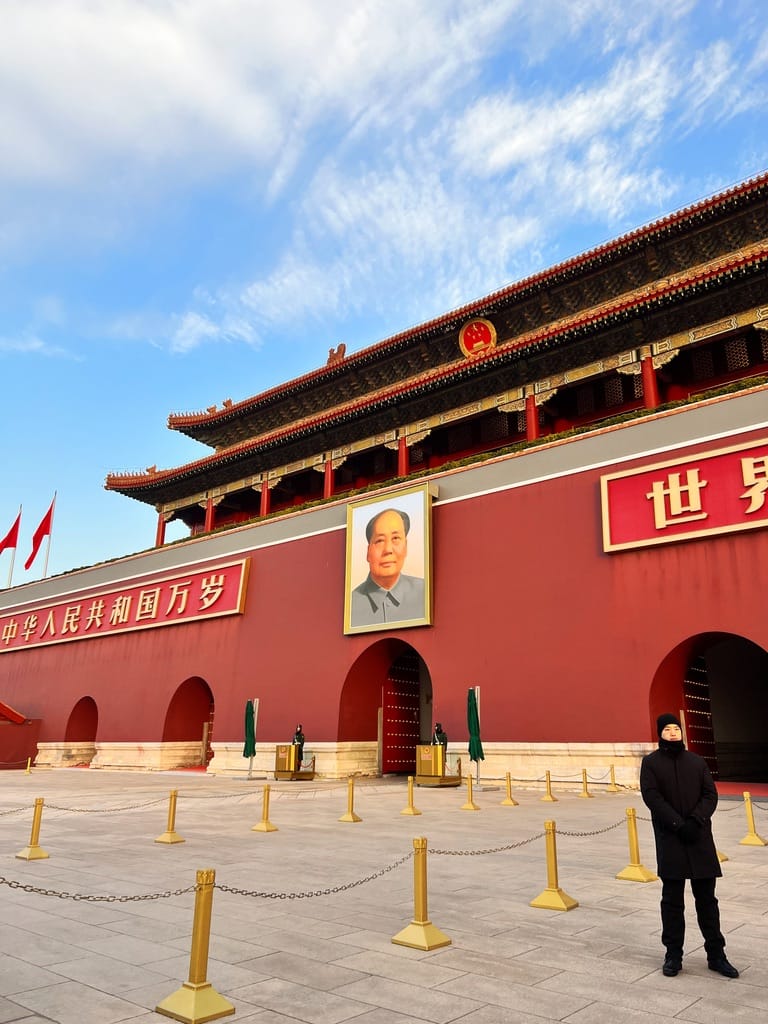
Beijing is a huge city with so much to see. I explored the Summer Palace, enjoyed the coffee shops and bars in Sanlitun, explored the hutongs, ate street food in Xinjiekou, wandered around Olympic Park, and did the teamLab Borderless experience. It’s a fascinating city with so much history and culture.
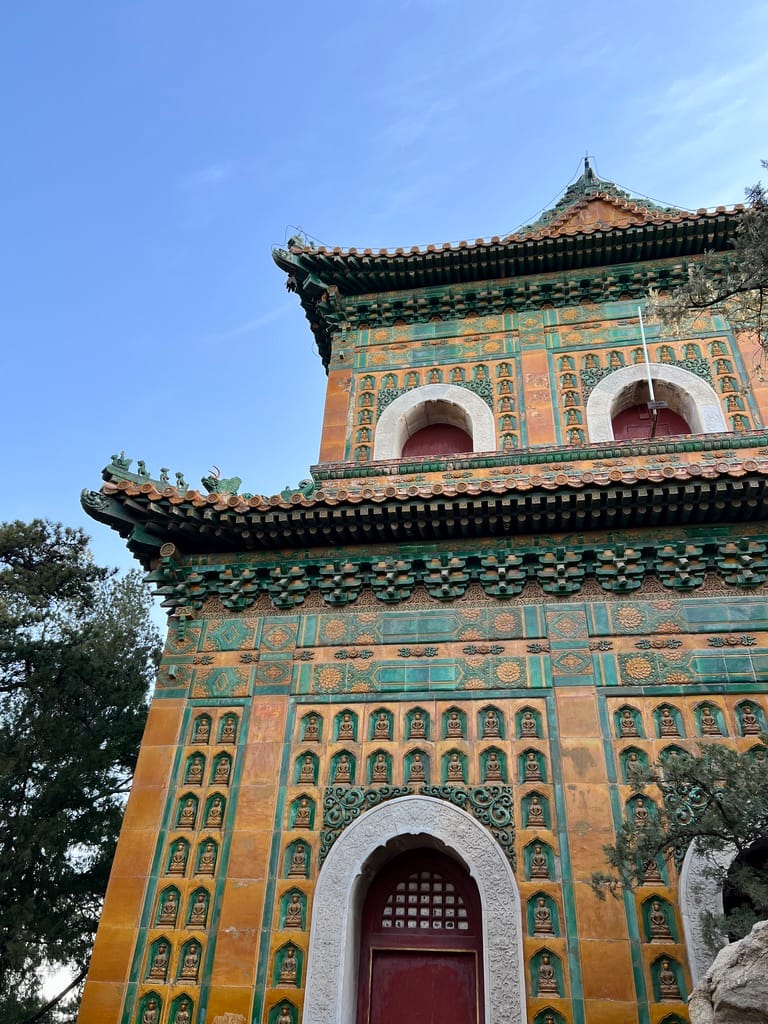
Tibet:
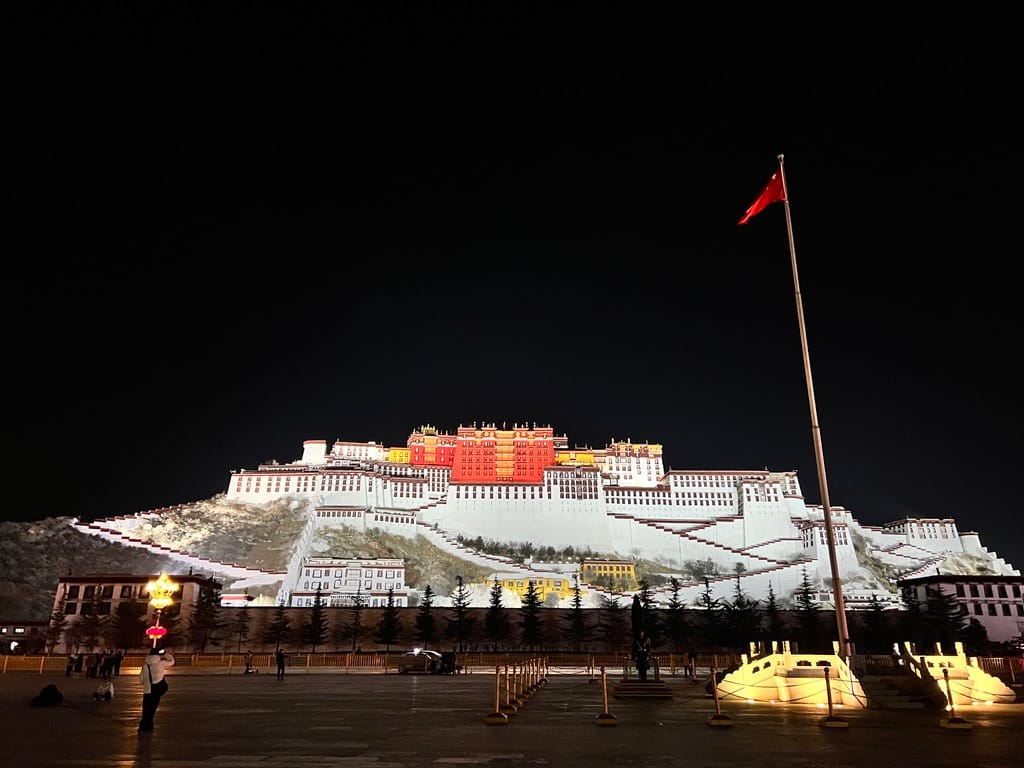
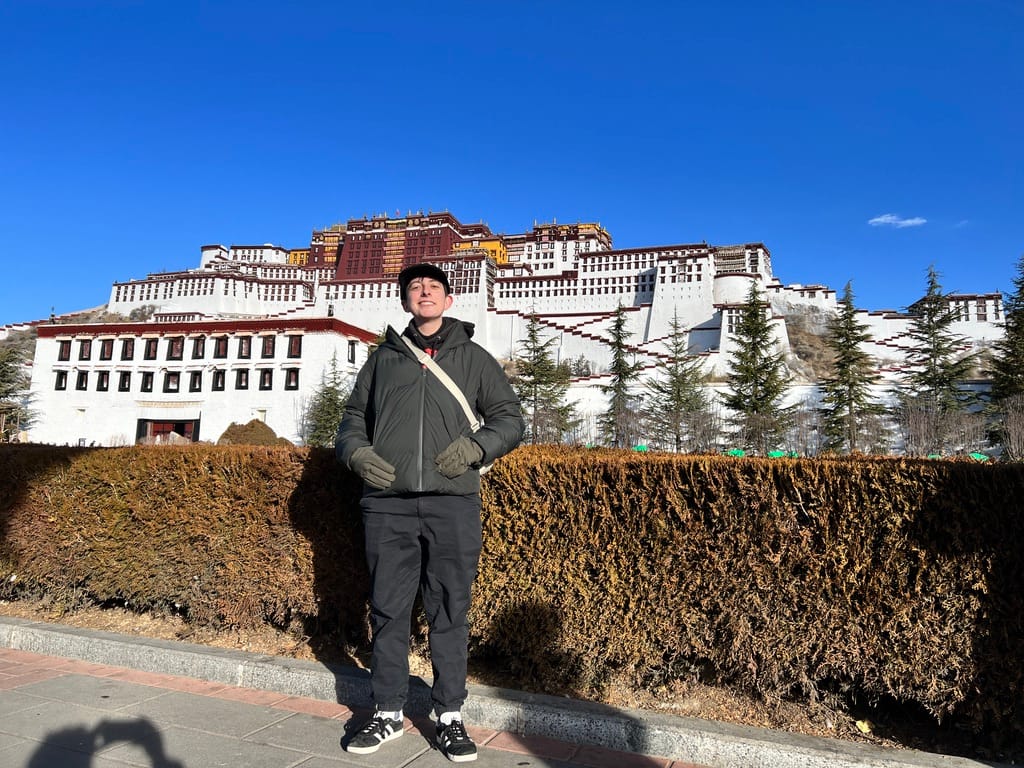
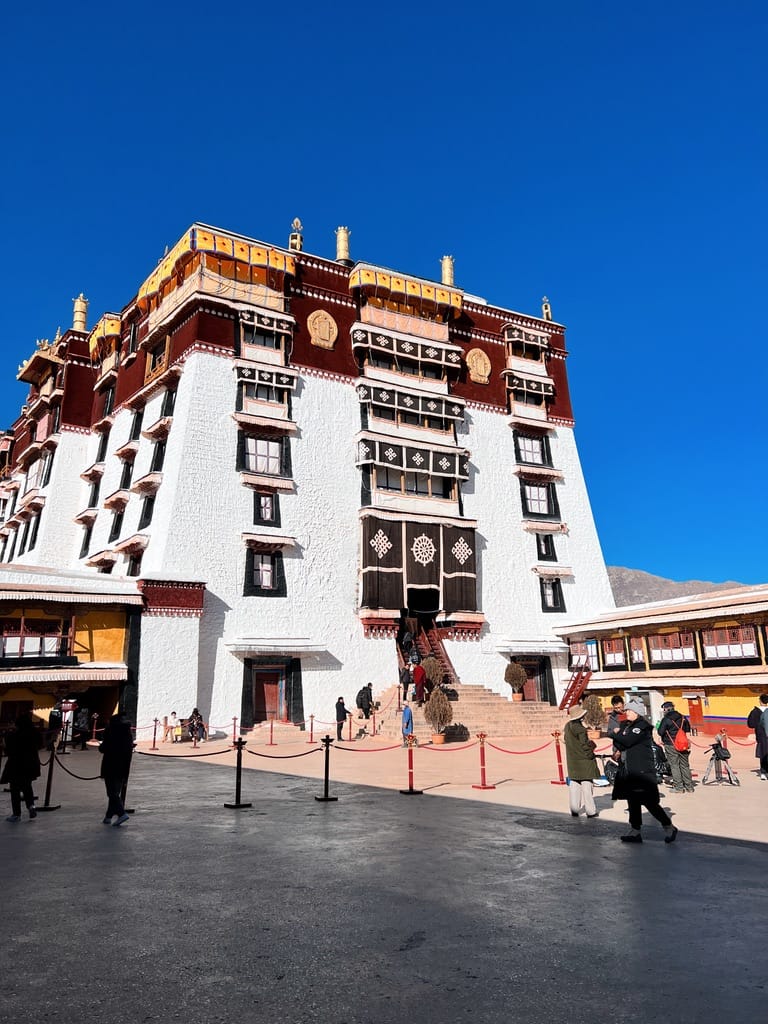
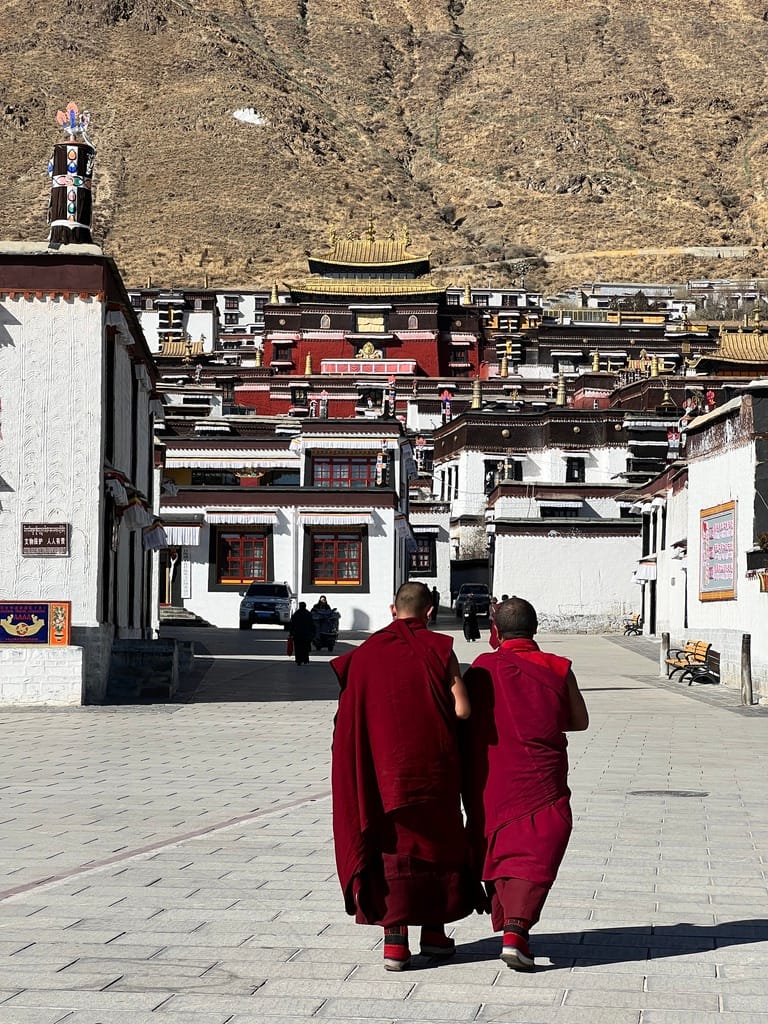

When I was researching things to do in China, I considered going to Harbin for the ice festival. However, the thought of being frozen solid didn’t appeal to me. I remembered that Mia had been to Tibet the last time she visited China and I was intrigued by that prospect.
Going to Tibet as a foreigner is tricky but not impossible. All foreigners need to be part of a sanctioned tour group and are not allowed to travel to and around Tibet independently. The tour group would be responsible for obtaining a Tibetan visa for me, and I had to pick up the visa in mainland China. I had them mail it to my hotel in Beijing. There were a few different tour options but I opted for an eight-day tour. The tour would start in Lhasa, Tibet’s capital city, and include a multi-day trip to Everest Base Camp.
Tibet was easily the most intense place I’ve visited. The political tension in Lhasa was palpable. There were police officers and security checkpoints everywhere. Chinese flags waved defiantly. The dismay was visible on the Tibetan people’s faces. You’d see them praying constantly—the full-body bow. They’d clasp their hands above their faces, then bring their hands in front of their face, get on their stomachs, and stretch their arms out on the ground. Then they’d get up, take a step forward, and the process would repeat. They walked in a clockwise direction. Their movements were strangely hypnotic. I was awed by their unwavering dedication to their beliefs while being surrounded by Chinese police officers who silently stared them down in disapproval.
My tour guide was a kind Tibetan man named Pasang. He informed us that he was born on a Friday, hence his name. When I asked what his parents would have named him had he been born on a Thursday, he wisely ignored my question. Pasang spoke Tibetan, Mandarin, and English. Our tour group consisted of me, a British teenager, two Polish lads, a couple from Hong Kong, two tour guides from mainland China, and a Chinese-American family from Wisconsin. We were quite the motley crew, but everyone was very nice.
The tour began in Lhasa, the highest city in the world. Not in terms of 🍃 but in terms of 🏔️. A lot of people get altitude sickness when they’re in Tibet, so the recommended steps are to 1) get a lot of sleep, 2) drink a lot of water, and 3) take it easy the first few days. I followed those steps and I felt fine in Lhasa. A good thing too because the monasteries we visited required walking up a lot of stairs in the mountains. The two Polish guys on my trip were my age but were heavy smokers, and they struggled to climb the steps. Meanwhile, I walked up with no problems. The monasteries in Tibet are amazing—especially Potala Palace. I’m a huge Avatar: The Last Airbender fan, and they were exactly like visiting an Air Temple (minus the flying air bison). It was a dream come true.
We spent a few days in Lhasa, touring the palaces of the Dalai Lama and various monasteries and temples. Pasang relayed the story behind the Dalai Lama’s exile, and I was like, wow… exactly what Aang had to go through. I also got to try Tibetan food for the first time and it was quite good. They eat a lot of yak so things like yak curry, yak dumplings and so on. Tibetan food is like a fusion between Chinese and Indian food which makes sense given its geographic location.
After Lhasa, we began our journey towards Mt. Everest Base Camp. We drove through the Tibetan countryside, traversing through the mountainous paths, which were gorgeous, and stopped at places with stunning natural beauty such as Yamdrok Lake, which was extremely cold and windy but beautiful. The further we drove, the higher the altitude got. We stayed overnight in Shigatse and then continued on to Everest Basecamp (EBC) the next day. Every few hours or so, we reached police checkpoints where we would present our visas and passports. During the final checkpoint before EBC, they issued us our most important visa: the Alien’s Travel Permit. This permit is what would allow us to see Mt. Everest.
The day we were due to see Mt. Everest, Pasang handed out portable oxygen bottles for all of us. He said we would probably need them. That’s when the reality of the situation hit me, and I became extremely nervous. The thought of being oxygen-deprived really freaked me out. I thought back on horror movies I’d seen where the characters would be gasping for air as they suffocated. What a terrible way to go.
We drove to our guest lodgings a few miles away from EBC and dropped off our stuff. Then we headed into special eco-buses that would take us to the base camp. We visited the highest monastery in the world that’s right by the mountain. That’s when the altitude really hit me. I scrambled to take off the lid of the oxygen bottle and took a few huffs. My lungs expanded with the newfound oxygen. Next to me, the two Polish guys were huffing the bottles, their faces beet red with exertion. They went through multiple bottles of the oxygen. I'm happy to report I only got through one.
After the monastery, we went to the base camp where you could clearly see the mountain and wow—what a breathtaking sight. Literally! I saw other tourists carrying around portable oxygen bottles, and there was even a woman carrying an oxygen tank on her back. If the altitude is already that extreme at the base camp, I cannot even begin to fathom what an incredible challenge it would be to climb the peak. Holy moly.
We stayed at base camp for a few hours to see the sunset. A random guy asked if he could take a picture with me since I was "beautiful." Always so nice to be surrounded by adoring fans. Once the sun set, we returned to our lodgings. I had a pounding headache that night—the altitude sickness had finally caught up to me. I chose to go to sleep early.
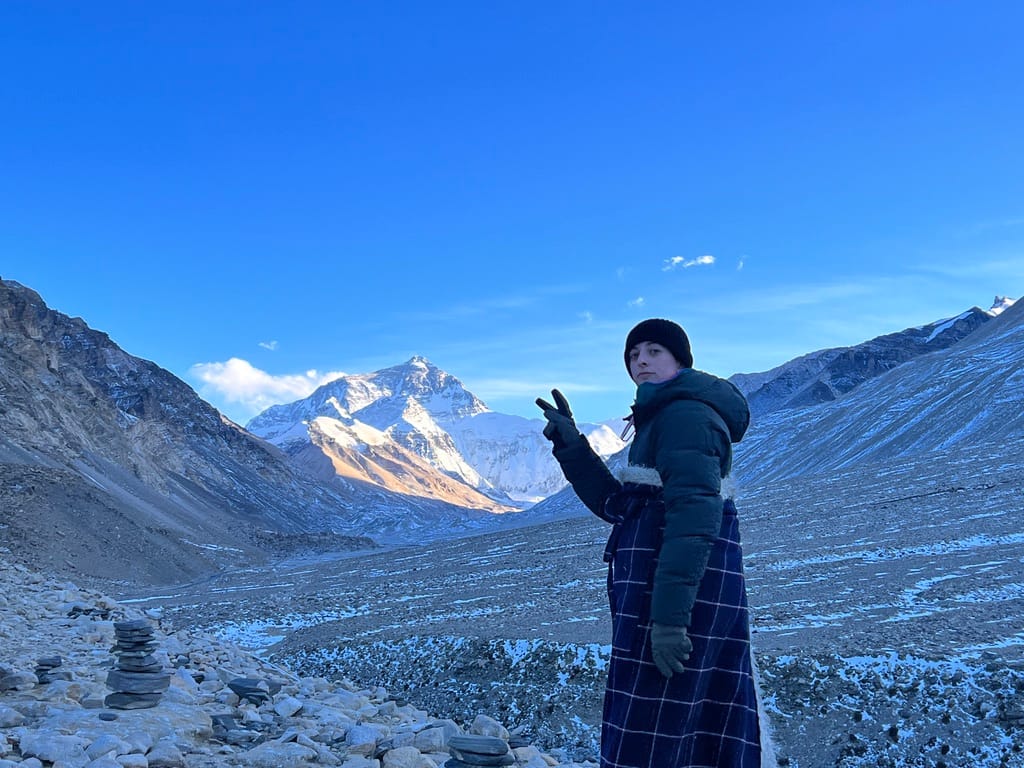
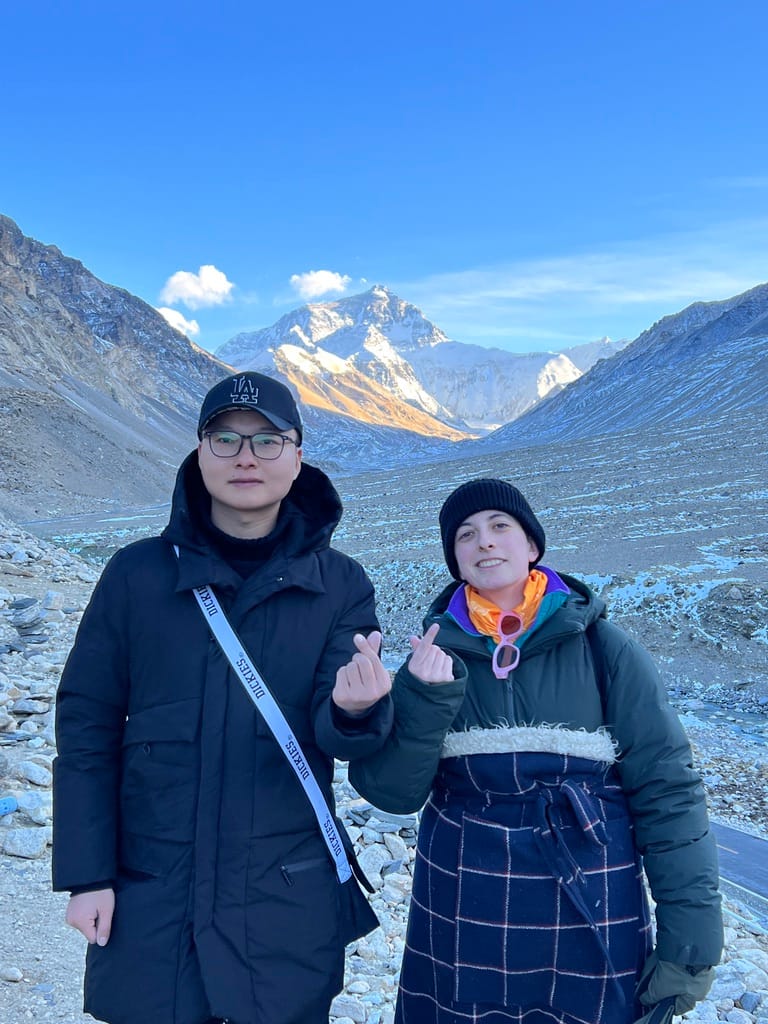
The next day, we made the journey back to Lhasa, once again doing an overnight stopover in Shigatse.
As I bid farewell to Tibet, my heart became heavy with the reality of the situation. Most people are aware of China’s discriminatory treatment of ethnic minorities, but I really don’t think people understand that China isn’t exactly doing mass killings—what they do is much subtler but equally insidious. They commit cultural genocide, and you can witness that for yourself in Tibet. In Tibet, every sign is in Tibetan and Chinese. There are Chinese flags everywhere. Hotels have framed pictures of Xi Jinping in them. The monasteries used to have hundreds of monks living in them, but the numbers have dwindled to just a few dozen. China invaded Tibet in the 1950s and, in recent years, has taken a tighter grip on the region. They banned journalists from going and foreign tourist movements are restricted. My tour group warned us against handing out political pamphlets or talking to anyone about politics. I’ve talked to friends who visited Tibet years ago pre-pandemic, and apparently, it used to be much different—things were much more open and lax. Foreigners had free rein to roam around. I’m sad to report that things have dramatically changed since then. To add to the injustices: Tibetans aren’t allowed to have passports. They’re trapped by the mountains and by Chinese policy.
Chengdu:
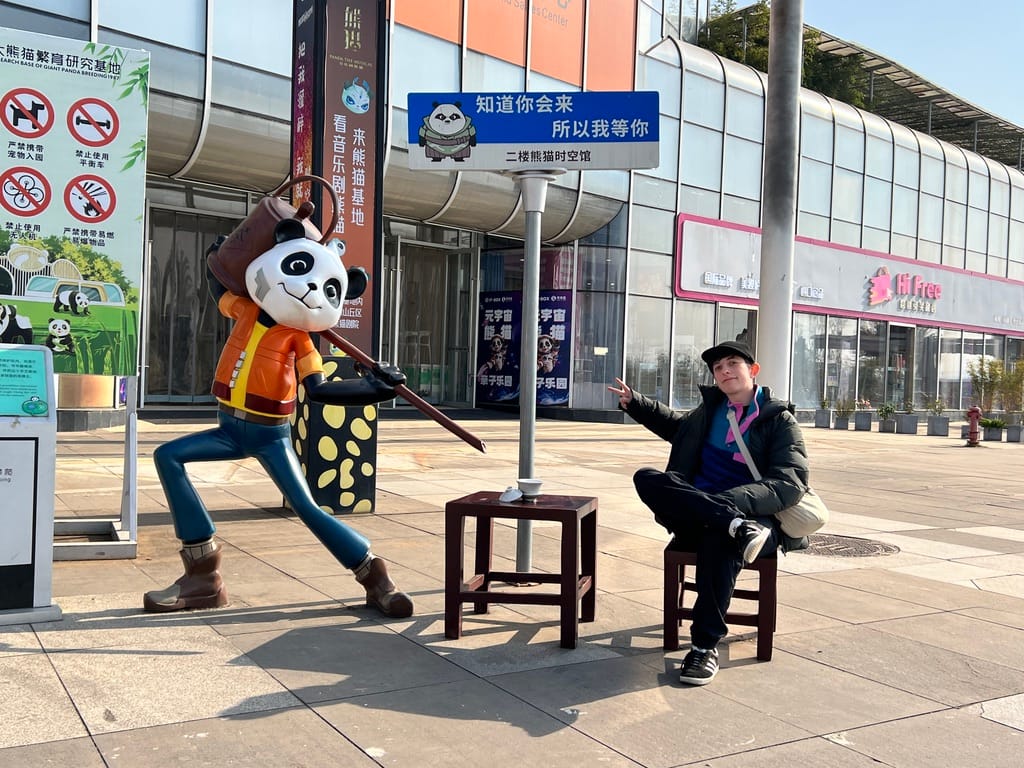

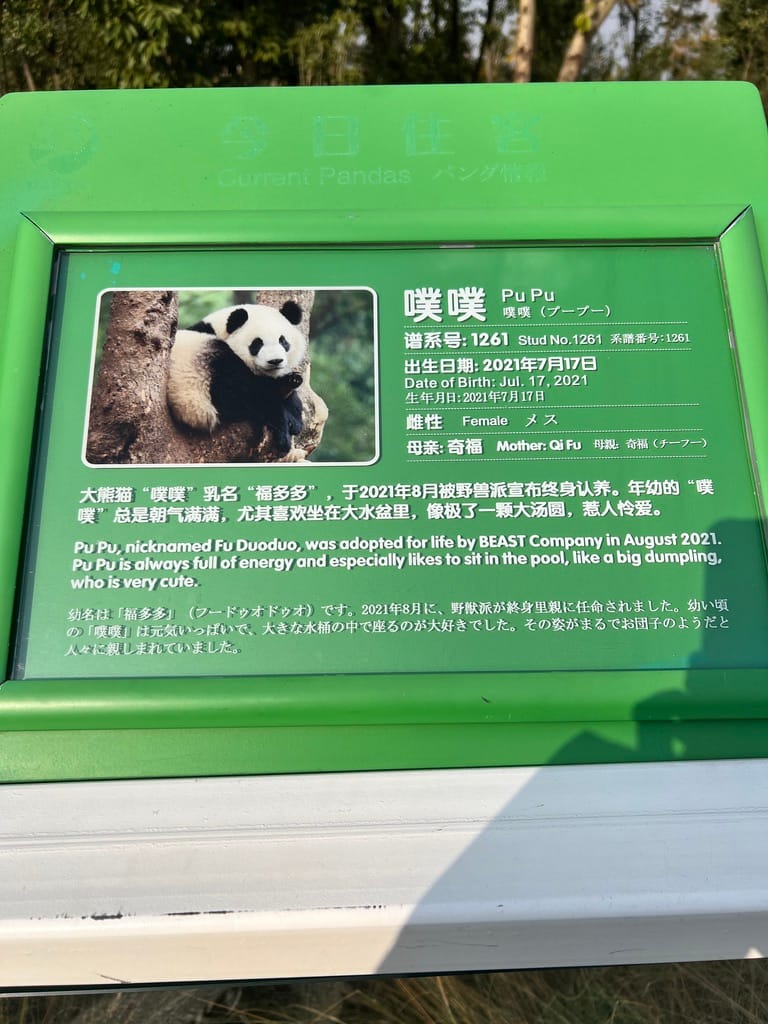
After Tibet, I flew to Chengdu to meet up with my friend, Mia! We met each other while studying abroad back in college, and after all these years, she’s still one of my closest friends and frequent travel companions.
Chengdu is famous for its panda sanctuaries, and the city doesn’t let you forget it either! The entire city is decorated with pandas—there are panda hats, panda figurines, panda-themed boba, panda shirts, anything that could have a panda on it, Chengdu’s got it.
I was pleasantly surprised by Chengdu. It’s an incredibly cool and fun city. It’s filled with young people and feels like such a vibrant and hip place to live. There's a lot of great stores for shopping, cool and hip coffee shops, interesting art exhibitions and a thriving night life. It also is the gay mecca of China—I was shocked by how many LGBTQ people I saw walking around. Obviously, they’re not as "out" as they would be in America, but the signs are definitely there if you know where to look. Mia and I took an overnight tour from Chengdu to Mt. Emei, and there was a young lesbian couple on our tour. Amazing.
Speaking of this tour, it was truly the funniest thing. I was the only white person on the tour, and everyone else on the tour was mostly elderly Chinese couples. The tour was entirely conducted in Mandarin, and I had no idea what the tour guide was saying the whole time. Mia had to be my personal translator. I was just happy to be there. 🧍🏻♀️🧍🏻♀️🧍🏻♀️
The tour picked us up from our hotel in Chengdu and drove us several hours away to Mt. Emei, one of the four sacred mountains in China. We explored the mountain, which boasts a temple at the very top. There was snow on the mountain so it was incredibly beautiful. The next day, the tour group brought us to see the Leshan Buddha, which is a giant Buddha carved out of sandstone. Afterwards, they dropped us back off in Chengdu.
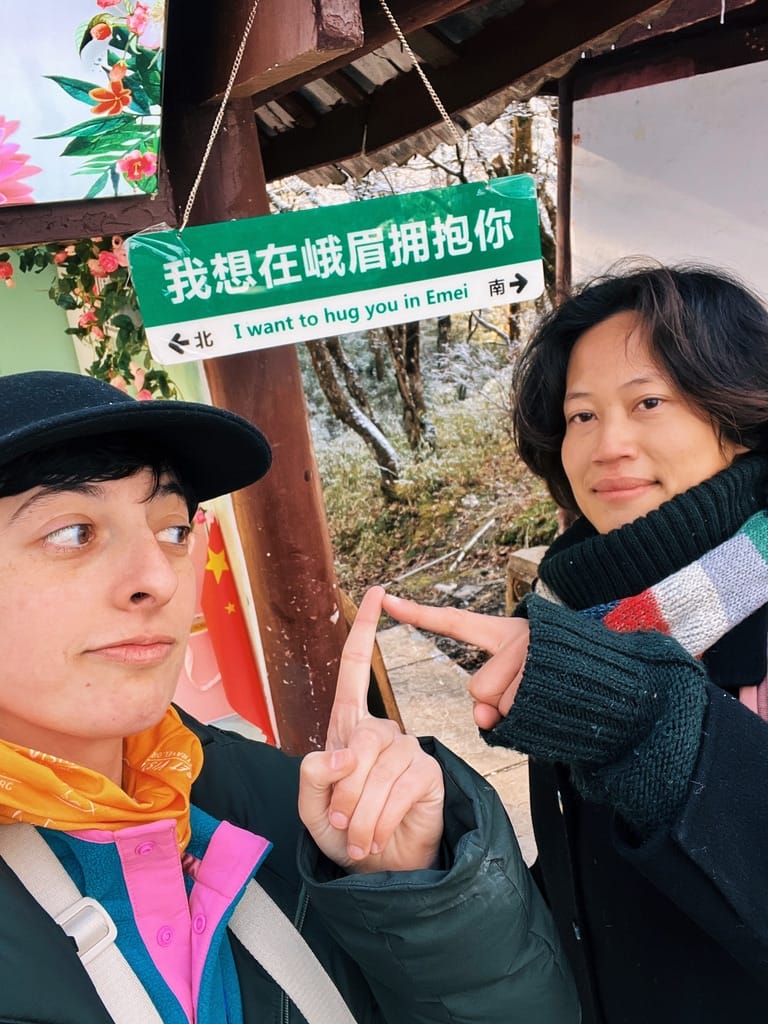

We stayed in Chengdu for a few days and went to the panda sanctuary where we saw a lot of cute pandas. Aside from that, we explored the city, ate a lot of good food, drank a lot of good coffee and had a blast overall.
Afterwards, it was time to take the train to Chongqing!

Chongqing:
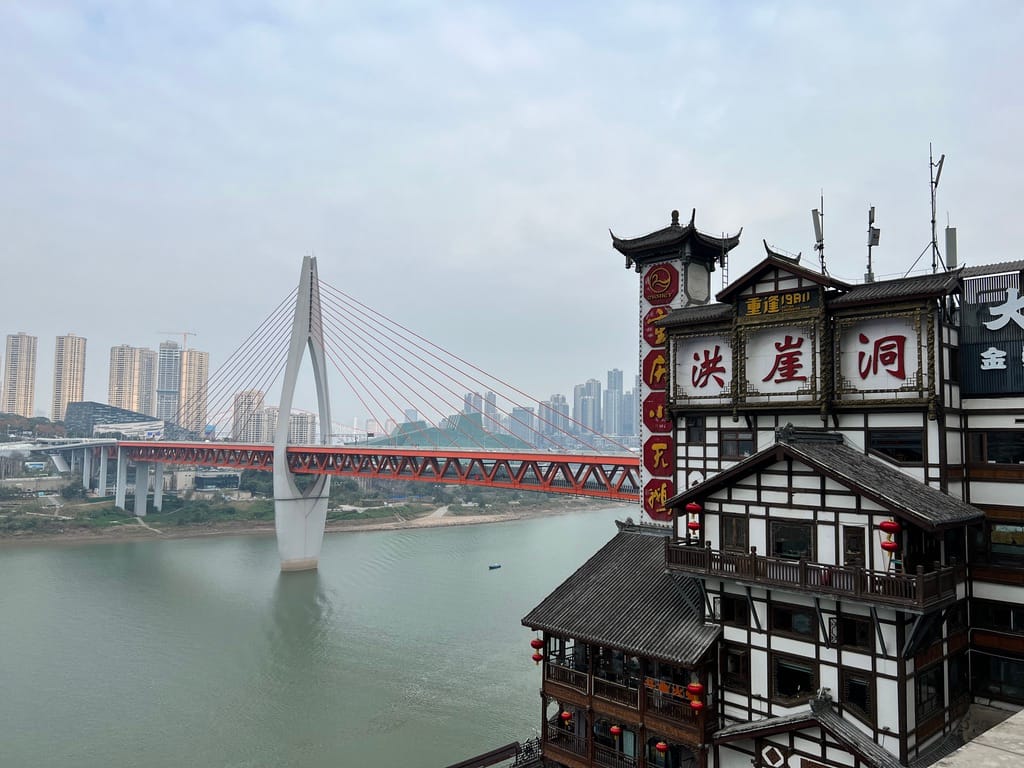
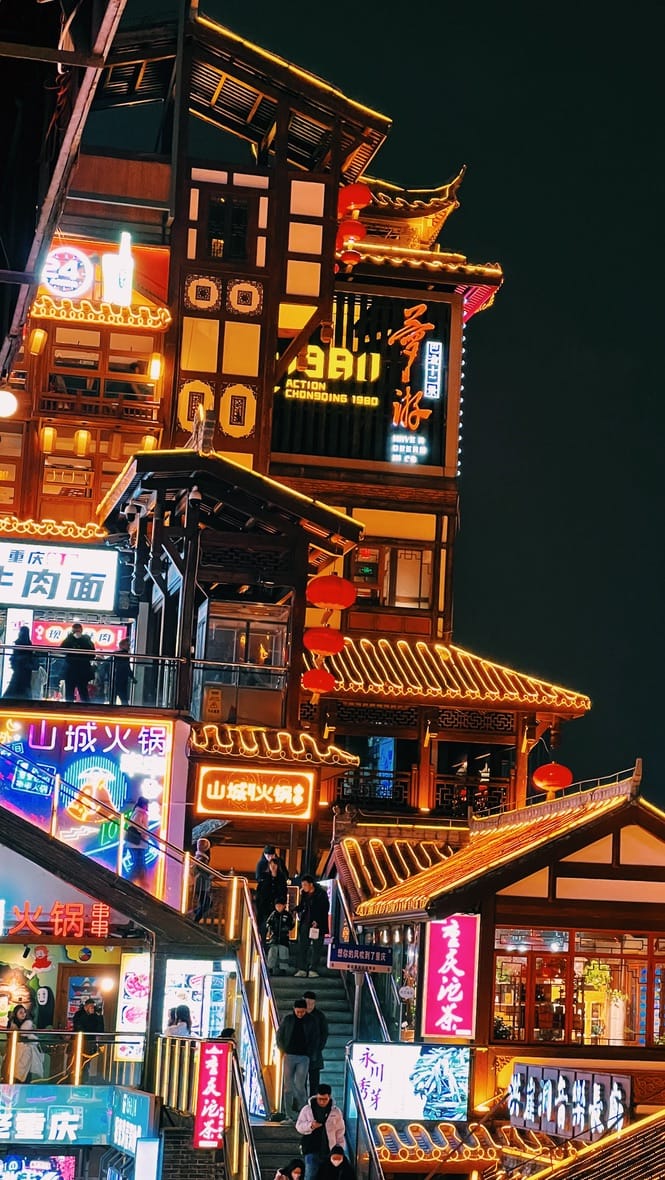
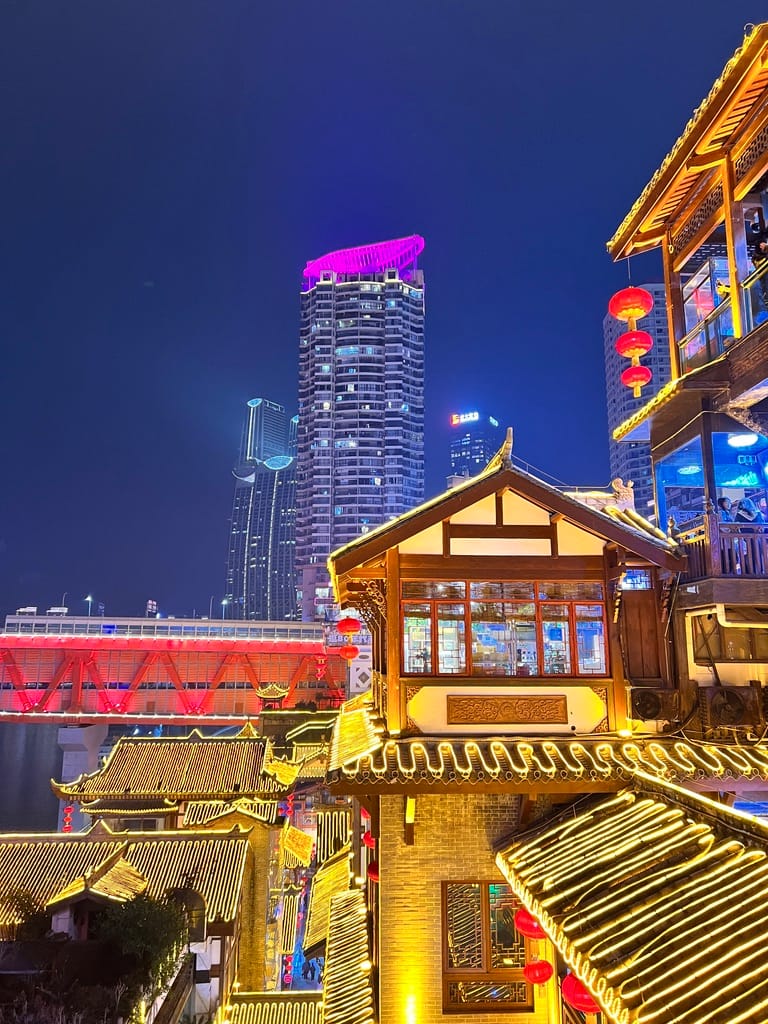
The city in the mountains. You most likely have seen the viral videos of Chongqing on social media—it’s the city where you think you’re on the ground level but you’re actually on the 40th floor. It’s the city where subways go through people’s apartments. Yep, that's Chongqing. Chongqing is a huge, almost cyberpunk city with an incredible vibe. The city lights up at night, and it’s dazzling and beautiful. It’s straight out of Blade Runner. It’s a mixture of old and modern. It’s a city that’s so huge that it’s both a city and a municipality. Fun fact: Chongqing is the size of Austria!
The thing with China is that it’s such a huge country that the sense of scale is hard for us Westerners to grasp. Years ago, I had a funny moment where I asked my friend Lanca where in China she was from and she said she was from a small island named Hainan. I was later shocked to find out that small island hosts 10 million people—that’s almost 10 times the population of Hawaii! But by Chinese standards, only 10 million people is a small island!
Chongqing was such a fun and unique city to visit. Since it’s so mountainous, elevators and escalators are part of its public transportation. Every so often, you’ll come across a path where you can pay 1 yuan to ride the elevator or else brave the steep stairs. I happily paid—Mia stubbornly refused to pay, so she took the stairs. We were the true epitome of west vs. east.
Hot pot is common all over China, but each region has its own variations of it. Mia and I went to a hot pot place in Chengdu that was a street food variation of it - the meat and vegetables were put on skewers, and we could select what we wanted from the refrigerated shelves. They charged us per stick. Chongqing hot pot, on the other hand, is known for being incredibly spicy, and it’s served in a giant pot where it’s divided into 9 grids. We were incredibly nervous to try this hot pot, not knowing the limits of our spice tolerance, so Mia told the server that we wanted “mildly spicy.” Well, it turns out even the “mild” version of that hot pot is very, very, very spicy. It was a bad sign when the waitress came out with the broth and it was a deep red. Still, though, Mia and I were determined to make it through, tears streaming down our eyes as we ate the food. I couldn’t tell you if it was good or not; I was only focused on my own survival.
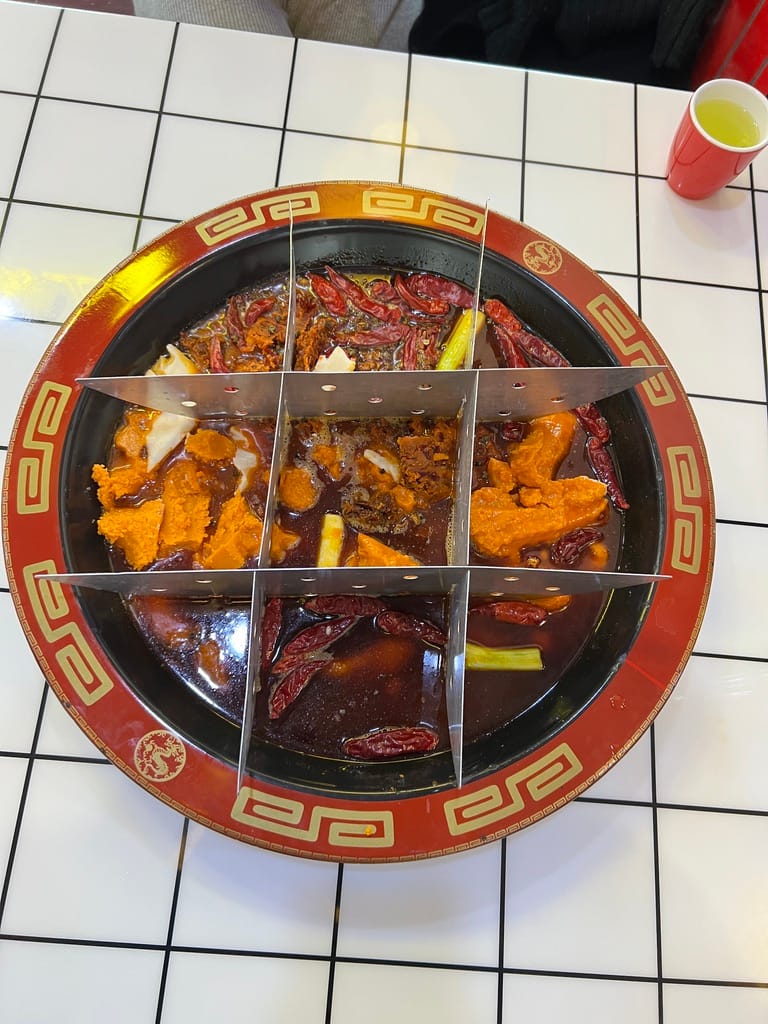
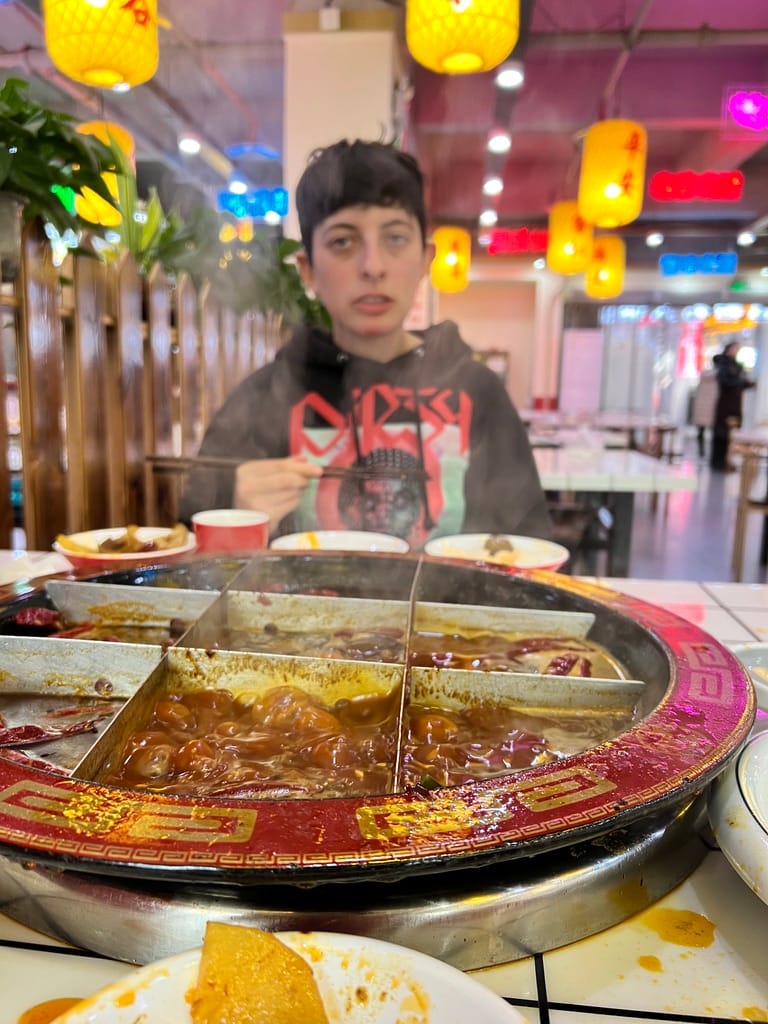
Mia and I spent a few days exploring Chongqing together and then it was time to say goodbye to each other. She was going to return to Guangzhou, her hometown, and I was off to Xi'an. PS: I spent Christmas day alone in Chongqing and it was pretty marvelous—I had no idea Chinese people took Christmas so seriously but they go all out for it! There were Christmas trees everywhere and buildings were decorated and lit up for it. People dressed up in Christmas colors. It was a lot of fun to be in China during Christmas (and I don't even celebrate it!).
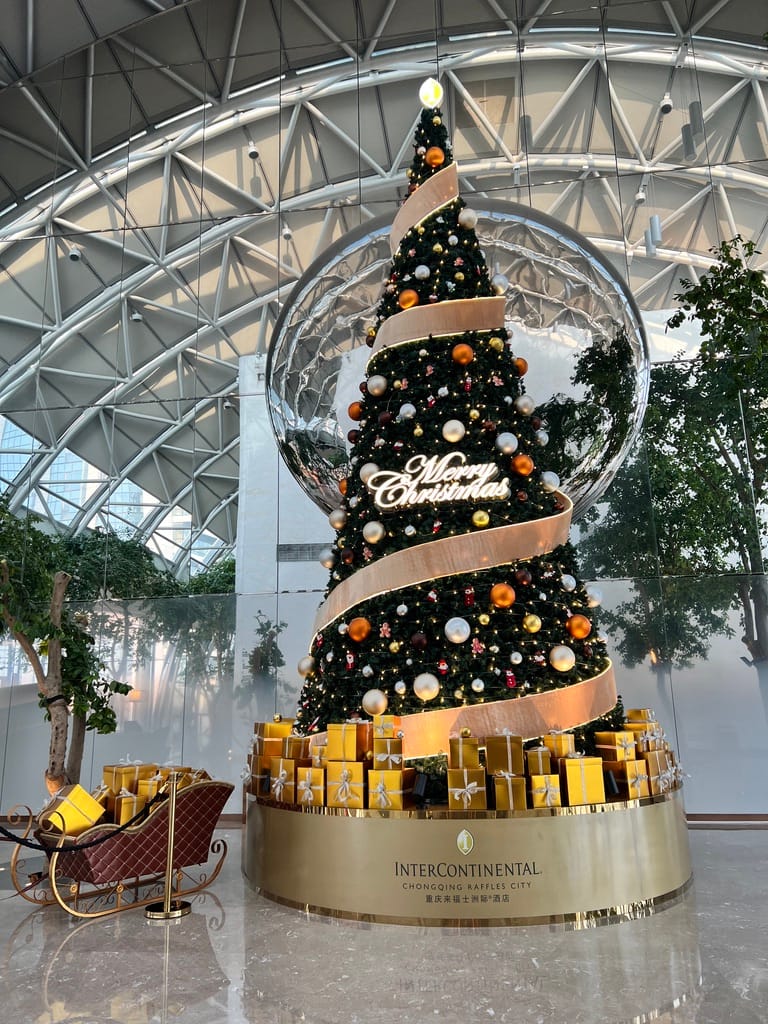
Xi'an:
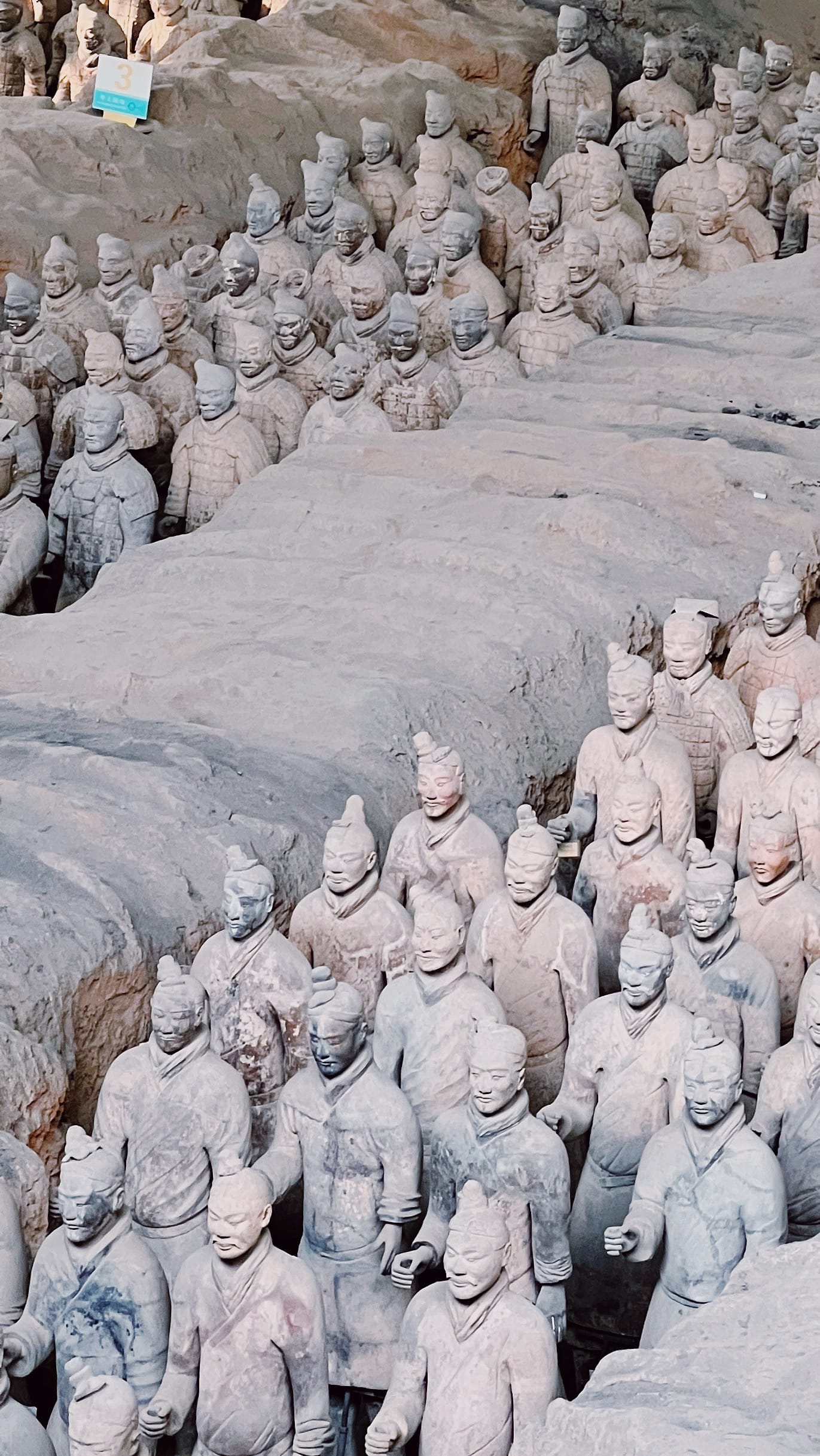
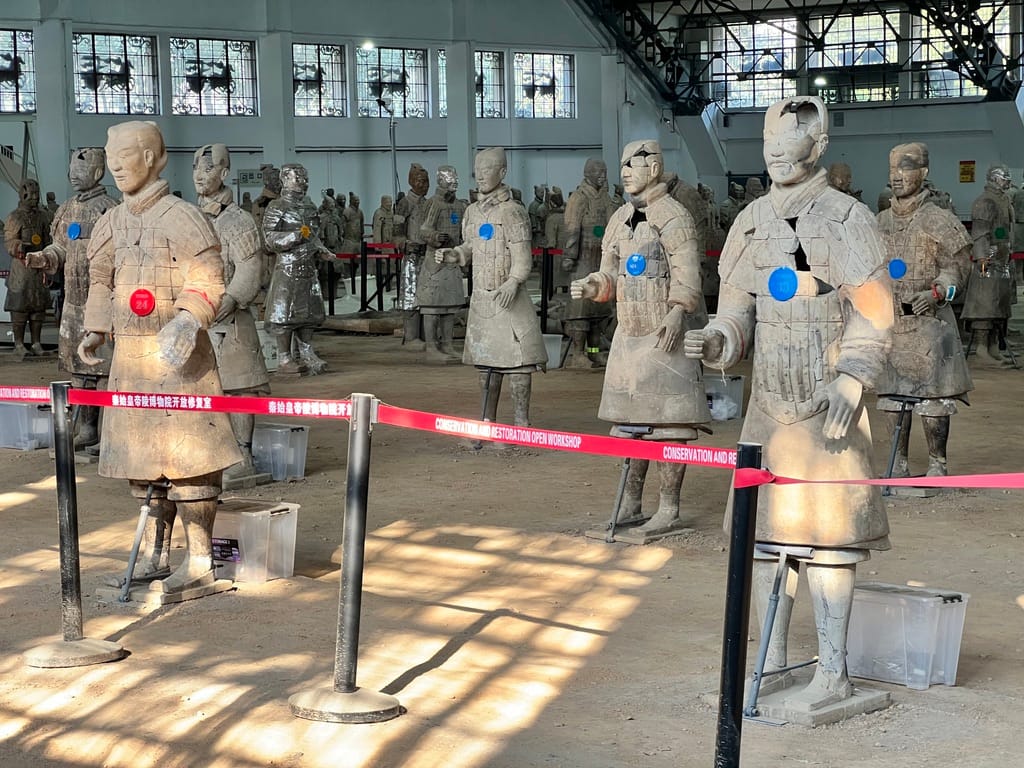
After Chongqing, I took another bullet train to Xi’an. Xi’an is the home of the terracotta warriors! It’s also known for its city-wide fortress and the Muslim quarters. Xi’an is a cute city, but I wouldn’t feel compelled to spend longer than a day or two exploring it. The terracotta warriors are interesting from a historical perspective because they’re all uniquely carved (each face is different), and there are so many of them, but they’re not super interesting to see in person unless you’re a real history nerd. Still though, I was glad to finally see them in person.
The fortress is fun to walk along. You can even rent a bicycle if you’re compelled to ride around the whole fortressI have no idea how long that would take but I assume at least a few hours. I walked along a short portion of the fortress and then found a cool neighborhood with a lot of cute coffee shops, and I chilled there for the rest of the day.
The Muslim quarters were interesting to wander around - there’s a mosque in the center, and then there are street vendors surrounding it selling food and items. This brings back my earlier point of how China “tolerates” ethnic minorities but not really. There was next to no Arabic found in the Muslim quarters besides some in the Mosque. According to my research, there used to be Arabic signs everywhere. Now everything is written in Chinese. There are definitely still Muslim street vendors, but they’re also sandwiched by Han Chinese vendors who sell Chinese food and drinks - boba, chicken feet, and so on. There was even a Russian store dedicated to selling Russian candies and souvenir items. The Muslims are slowly being replaced by non-Muslim Chinese people.
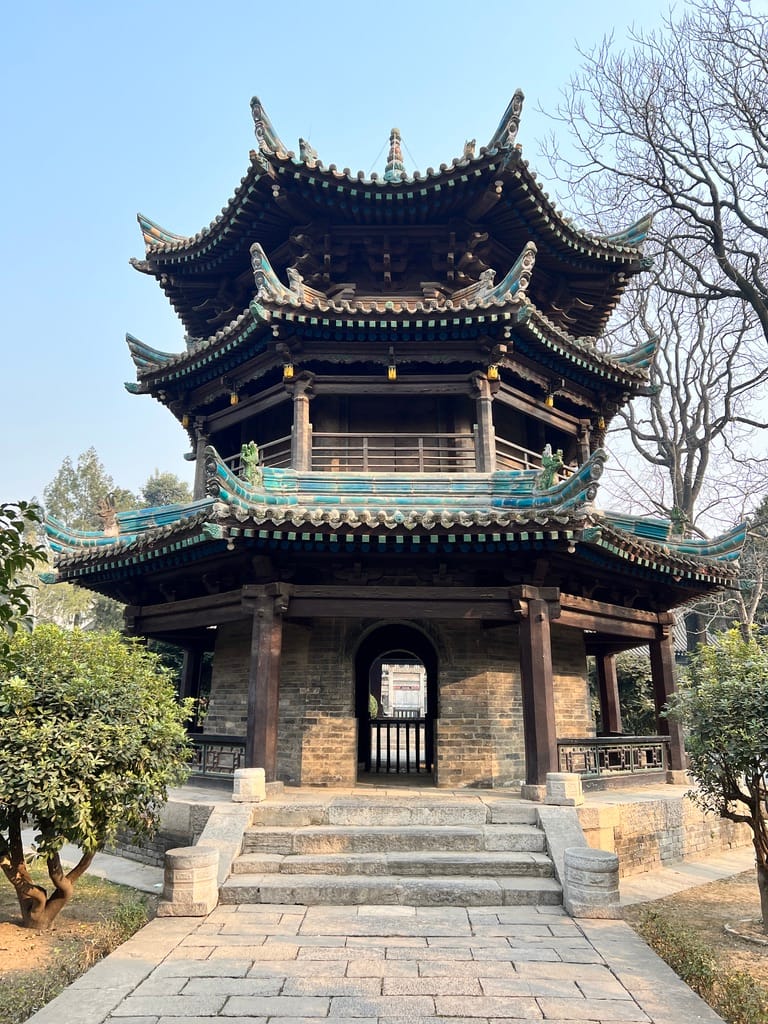
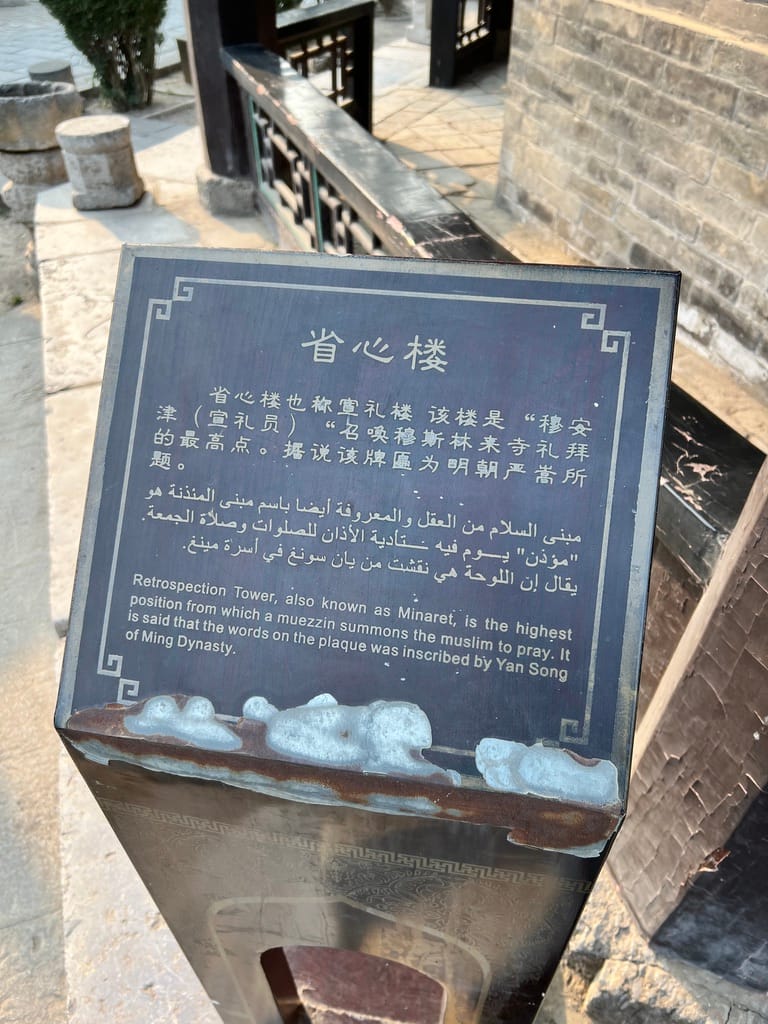

After Xi’an, I took the train to Beijing, where I flew out of China the next day.
This trip to China was a blast and it was my first time in the north!It was amazing to see the iconic sights that I weirdly missed out on during my past visits to China. Tibet was an incredible time and truly such a unique and tragic place to visit. I’ll always cherish my time spent there. China is one of those countries that I keep wanting to go back to. I really want to go to Harbin for the ice festival, explore Inner Mongolia, check out Xinjiang, Qingdao, Zhongjiajie, and more! China is huge, and there’s so much to see!